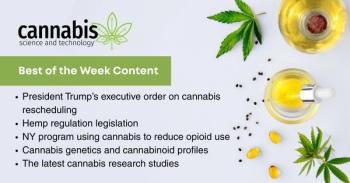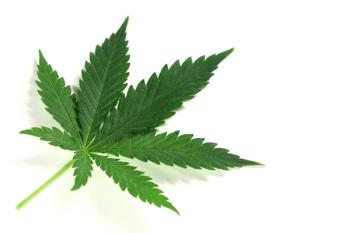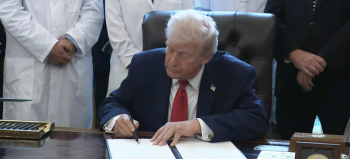Cannabis Science and Technology
- Women in Grow: Leadership in Cannabis Genetics and Cultivation
- Pages: 14-16
Cannabis Genome Complexity and Hemp Farming with Daniela Vergara, PhD
Daniela Vergara, PhD, delves into how she landed into the cannabis industry and the complexities behind the plant.
Daniela Vergara, PhD, spoke to Cannabis Science and Technology about her journey to the cannabis industry, early research in cannabis genetics, and her work at the Cornell Cooperative Extension where she helps New York hemp farmers navigate the many complexities of cultivation. Dr. Vergara thrives on collaboration and hopes to encourage transparency and data sharing within industry through her work.
Cannabis wasn’t originally the path Dr. Daniela Vergara set out on. She first got her bachelor’s degree from the University of the Andes (Bogota, Colombia) and then her doctorate from Indiana University Bloomington (Bloomington, Indiana). Dr. Vergara worked on host parasite for evolution as an evolutionary scientist. Upon graduating, she decided host parasites was no longer a field she wanted to pursue and moved to Denver, Colorado with her husband where she started her postdoc in genomics and bioinformatics on sunflower genomics. “When I graduated from Indiana, I did not want to know anything about host parasites anymore; it was an amicable divorce,” said Vergara. Due to the legalization of cannabis in the Centennial State, Dr. Vergara turned her focus on cannabis genomics, which her husband encouraged her to pursue.
Delving into cannabis, Dr. Vergara was struck by both the complexity of the plant and the industry she was entering. Cannabis is a complex plant and one of those reasons is because it is a dioecious, which is when there are both male and female species. “[With most plants] you have the perfect flower where you have the male parts and the female parts. But in cannabis, you don’t have that,” said Dr, Vergara. This characteristic is what interested her the most and drew her to the plant. Through working with cannabis and researching the genome, she learned that the plant ranks very high in diversity. “So, according to my rough estimates cannabis could have…probably two times or three times as much [diversity] as the human species,” Dr. Vergara mentioned. Diversity, she explains, is important in plant biomes because it helps with parasite pressure and with fighting virulent diseases. Plants reproduce sexually to continue to be able to evolve the species which creates new variations in the genome.
This amount of diversity present in cannabis makes it challenging to sequence and assemble the DNA of cannabis. On tope of this, there was also the legal and regulatory factors of working with cannabis, even if it just was cannabis DNA. Dr. Vergara found herself meeting with lawyers to avoid legal issues. “For me, it was a plant, and instead of growing a tomato, like your plant in the living room, it was cannabis,” Vergara commented. Working through the legal channels was interesting for Vergara and showed her a need in the industry for open collaboration. The lack of transparency of cannabis genetic information has led to a lack of consistency inthe market, which can make it more difficult to study the effects of cannabis.
For example, in 2017, Dr. Vergara took part in a research paper called, “Compromised External Validity: Federally Produced Cannabis Does Not Reflect Legal Markets” that was published in Scientific Reports (1). As you many know, the National Institute on Drug Abuse (NIDA) is the sole legal producer of cannabis that is used in research studies within the US. The researchers sought to investigate the chemical profiles of the NIDA-supplied cannabis and state-legalized options. Researchers measured cannabinoids from a variety of Cannabis sativa L. from Seattle, Denver, Sacramento, and Oakland. Steep Hill Labs, Inc. measured these varieties from October to December in 2013 and then from January to September in 2014. Data acquired from NIDA had been accessed from their website on November 15, 2015 (1). Through analyzing all the data, it was concluded that cannabis plants that were being grown at NIDA were not a representative of the plants that were being consumed by medical and recreational cannabis users. Results showed that flower offered at dispensaries were more diverse in cannabinoid content, as well as more potent (1).
During the COVID-19 pandemic, Dr. Vergara moved to New York to work for the Cornell Cooperative Extension. At Cornell’s Cooperative Extension, Dr. Vergara is the program’s hemp specialist where she interacts extensively with New York State hemp farmers, helping them navigate the many challenges of farming hemp, both legal and logistical. Among her main goals as part of the program is to figure out how much hemp the state is producing as well as how to improve growing conditions.“I really like the interaction with people,” says Vergara. “I feel that my job is very fulfilling because I am helping people, but at the end of the day I feel they are helping me because I’ve learned so much, about legality [for example]…I get calls about how do I interpret this regulation, or how do I read this COA, or what do I do with my soil, and I do not have that background. So, I’ve had to teach myself many things or I have people at Cornell I can rely on.”
There are a number of variables that impact productivity, says Vergara.One way to think about it is through the size of the operation. For example, if you are a one man show, it’s important to take care of what and when to grow. It may therefore be unwise to plant photoperiod on June 1 because when you harvest them in October they are going to be huge, says Dr. Vergara. This makes it difficult to harvest. Planting photoperiods in July may be a better option since they will not be as big come harvest time. There may be less yield, but you won’t have to spend as much on labor to harvest. “I think autoflowers provide a good alternative as well,” says Dr. Vergara. “Perhaps you’re not going to get as many A-buds, but you don’t have to trellis them, you don’t have to prune them,” making them a low maintenance option. It also depends on whether you’re aiming to produce flower or to process the harvested materials.
Dr. Vergara also has her mind on processing for which she hopes to produce more substantial resources. Cornell Cooperative Extension has published a number of free resources for growers. In 2023, a manual led by Dr. Vergara was released and subsequently translated into Spanish. The following year in 2024, the organization published a guidebook (2,3). According to Dr. Vergara, the original manual only had one page on post-harvest. She wants to take that one page and expand heavily on post-harvest practices. For processing, for example, Dr. Vergara wants to be very biochemistry oriented.
There’s no doubt that such information will be invaluable. The current resources from Dr. Vergara and the Cornell Cooperative Extension have already seen a great deal of traction. The guidebook, for example, has received over 4,000 views. The guidebook provides cultivators with Good Manufacturing Practices (GMP) to help with product safety and quality, best practices in cultivation, regulatory compliance information, and also “includes Integrated Pest Management (IPM) strategies, featuring preventative measures, recommended products, and reactive protocols to manage pest issues effectively.”(3) Inside this literature are also product tracking sheets, IPM scouting logs, as well as forms to help with tracking product applications which will help readers with record-keeping and maintain their compliance. Through these online resources, Dr. Vergara has even been able to reach people as far as France.
As Dr. Vergara grows the body of data on hemp production in New York State, she is working with individual growers. As an example, she is worked with an indoor growing facility, measuring photo periods, flower production, and man hours to produce an economic analysis of production. While this is only one case study, it may offer valuable insights that may benefit other growers in the state. Dr. Vergara hopes to publish that research in the near future. Additionally, the 501C3 non-profit, The Agricultural Genomics Foundation, of which Dr. Vergara is the founder and president, will be conducting a reciprocal transplant experiment (4) to evaluate Cannabis sativa varieties across diverse environments. The aim is to improve breeding strategies, enhance sustainable cultivation practices, and empower cultivators through collective knowledge-sharing. The study is done in collaboration with Atlas Seed and anyone who buys seed from them can participate.
A key to Dr. Vergara’s work is collaboration. Science should be collaborative, and through her efforts, she hopes to encourage more knowledge-sharing and demonstrate its value to stakeholders in the industry.
References
- Vergara, D., Bidwell, L., Gaudino, R. et al. Compromised External Validity: Federally Produced Cannabis Does Not Reflect Legal Markets. Sci Rep, 2017, 7, 46528.
https://doi.org/10.1038/srep46528 - Cannabis sativa L. GuideBook
https://cornell.app.box.com/s/ox9j6ut7jqdbip5drgitwdmp4f2gwb6m (accessed Apr 17, 2025). - Cornell Cooperative Extension harvest New York
https://harvestny.cce.cornell.edu/submission.php?id=168&crumb=emerging_crops%7C8 (accessed Apr 17, 2025). - The Agricultural Genomics Foundation. Experimental Field Performance of Cannabis.
https://www.agriculturalgenomics.org/farmers-project-2025 / (accessed Apr 29, 2025).
About the Author
Madeline Colli is the Editor for Cannabis Science and Technology magazine. Direct correspondence to:
Articles in this issue
Newsletter
Unlock the latest breakthroughs in cannabis science—subscribe now to get expert insights, research, and industry updates delivered to your inbox.





